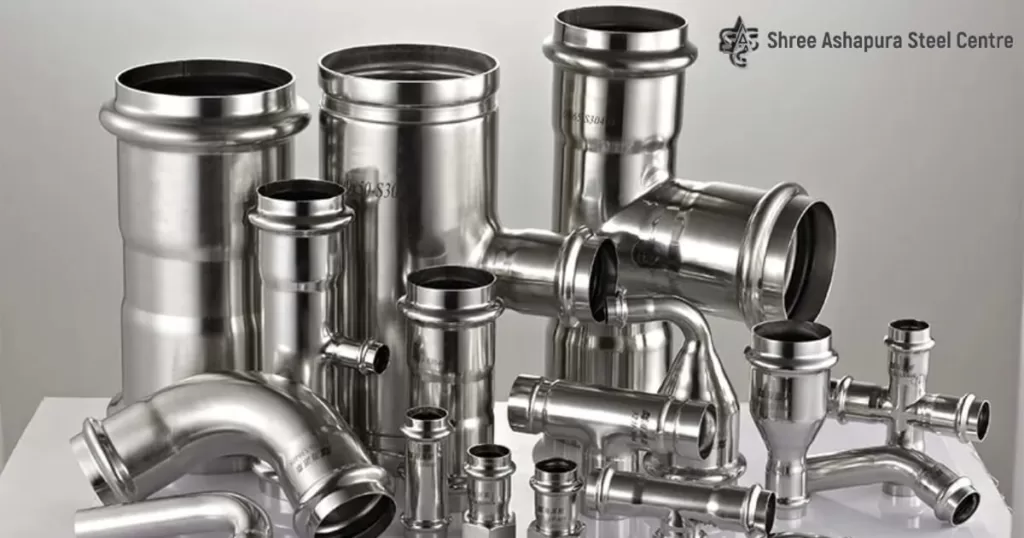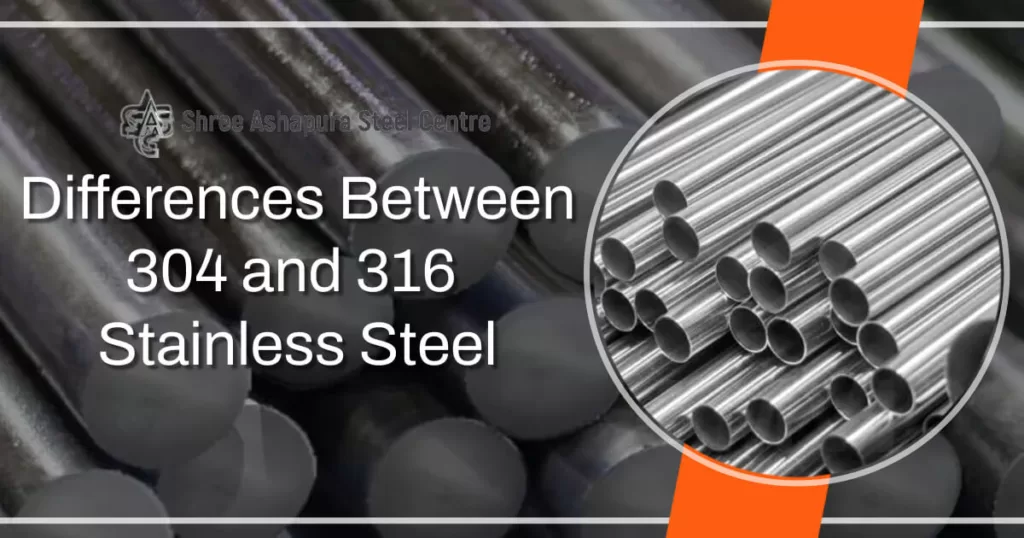What is 304 Stainless Steel?

The grade of stainless steel known as 304 receives the most significant number of orders worldwide of any other stainless steel grade. It is an austenitic variety of stainless steel that contains between 8 and 10.5% nickel, 18-20% chromium, and several other elements, including carbon, manganese, and silicon. Because of these characteristics, stainless steel 304 has a high resistance to heat and corrosion, and it can be used in various industrial and professional contexts.
What is 316 Stainless Steel?

The chemical composition of 316 stainless steel, also known as grade 316 SS, consists of austenite with a maximum carbon content of 0.08%, nickel content of 10%, chromium content of 16%, and molybdenum content that ranges between 2-3%. It has strong tensile strength, excellent machinability, and excellent weldability, all characteristics of austenitic steel. Because it contains 2% molybdenum, it is impervious to weathering in saline and fresh water, notorious for having a high chlorine concentration.
Differences between 304 and 316 stainless steel

- Composition
|
304 vs 316 Composition (%) |
||||||||
|
Stainless Steel |
C, ≤ |
Si ≤ |
Mn ≤ |
P ≤ |
S ≤ |
Cr |
Ni |
Mo |
|
304 |
0.08 |
1.00 |
2.00 |
0.045 |
0.030 |
18.0-20.0 |
8.0-11.0 |
– |
|
316 |
0.08 |
1.00 |
2.00 |
0.045 |
0.030 |
16.0-18.0 |
10.0-14.0 |
2.0-3.0 |
- Corrosion resistance
The stainless steels of grades 304 and 316 are both impervious to corrosion; however, due to the presence of molybdenum in grade 316 stainless steel, it offers a greater level of corrosion resistance than grade 304 stainless steel. Consequently, stainless steel of grade 316 is better able to withstand intense environmental conditions, such as exposure to saline water, de-icing agents, briny solutions, and chemicals. Stainless steel of grade 304 will resist corrosion for some time, but over time it will start to discolor and become less shiny.
- Mechanical Properties
- Stainless Steel 304 vs 316 mechanical properties
| SS304 vs SS316 Mechanical Properties | ||||||||
|---|---|---|---|---|---|---|---|---|
| ASTM | AISI | Tensile Strength, MPa (ksi), ≥ | 0.2% Yield Strength, MPa (ksi), ≥ | Elongation in 50 mm, %, ≥ | Reduction in area, %, ≥ | Brinell Hardness (HBW) ≤ | Rockwell Hardness (HRBW) ≤ | Condition |
| ASTM A276/A276M | 304 | 515 (75) | 205 (30) | 40 | 50 | – | – | Annealed, Hot finished |
| 316 | ||||||||
| 304 | 620 (90) | 310 (45) | 30 | 40 | – | – | Annealed, Cold finished, ≤ 0.5 in. (12.7 mm) | |
| 316 | ||||||||
| ASTM A240/A240M | 304 | 515 (75) | 205 (30) | 40 | – | 201 | 92 | |
| 316 | 217 | 95 |
- Uses
Stainless steel, known as 304, is utilized regularly in various applications. It is common to find it in products and appliances for the home, such as pots and pans, coffee pots, furnaces, refrigerators, and toilets, among other things. Additionally, it finds widespread application in the brewery and food manufacturing businesses, as well as in dairy manufacturing machinery. Nuts, bolts, screws, and other components are commonly made out of stainless steel of grade 304.
Using stainless steel type 316 in harsh environments is more common, and industrial processes require more excellent corrosion protection than grade 304 stainless steel can provide. These environments and processes are examples of where 316 stainless steel is utilized. This metal form is frequently used to manufacture chemical processing equipment, industrial components and fixtures, and surgical implants. Because of its remarkable resilience to oxidation and weathering, it is also frequently used in environments that are near or on the water.
- Cost
Because of its improved chemistry and manufacturing characteristics, 316-grade stainless steel typically carries a price tag that is marginally higher than that of 304-grade steel. The additional expense may, however, be justifiable because components made of 316 stainless steel are exceptionally impervious to tarnishing and corrosion, which enables it to last for an unusually long time.
Consumers, distributors, and manufacturers can benefit from the high quality and long-lasting durability of the hardware products that Hensgen Hardware offers. Our products, including snap hooks, pulleys, rings, and chains, are crafted using superior-grade components throughout manufacturing. The 316 grade stainless steel used in producing steel goods sold by Heinsgen Hardware gives those goods increased resilience to rust and wear, as well as more excellent sturdiness.
Please contact us if you want more information about our stainless steel fasteners and other goods offered by Shree Ashapura Steel Centre.





